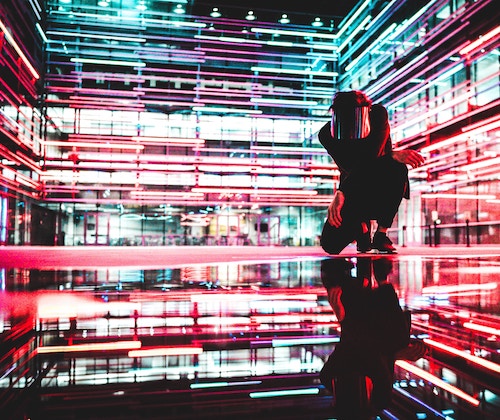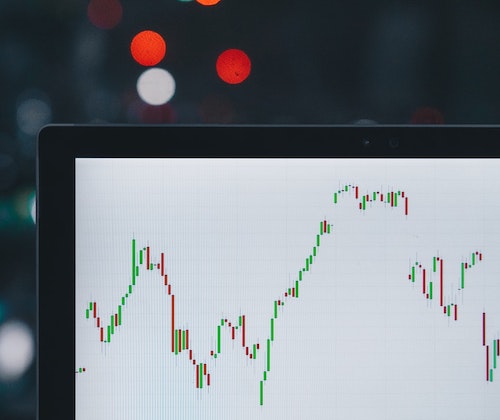At Cuseum we’re stoked to keep on doing amazing things with Blackbaud. We’re so excited about our latest piece on their npENGAGE blog, which explores AI in museum membership and attendance.
Artificial intelligence (AI) might just be the buzzword of the year, and with good reason. From filtering email spam to offering up personalized Netflix recommendations, AI already underlies many routine aspects of our lives in ways we don’t even realize.
AI has also penetrated the commercial sector in a number of ways. Lots of us might be familiar with chatbots, but it goes far beyond this. From offering customized marketing messaging, transferring and cross-referencing data, deciding personal injury claims for insurance firms, to enabling financial fraud detection, the business sector is driving innovative applications of artificial intelligence technology.
But, the commercial sector is not the only one that stands to benefit from AI. Museums and nonprofits can also reap huge benefits from employing artificial intelligence, particularly in their membership and development departments. Typically, for-profit companies adopt new technologies 3 years before the nonprofit sector does, but this is not something nonprofits can afford to lag on – the return on investment is too high to ignore!
Here are 4 ways AI can help museums and nonprofits deepen member engagement, increase attendance, more effectively communicate with donors, and drive revenue:
1. Boost Your Staff’s Productivity
Development is the backbone of the nonprofit world. This being the case, building relationships with donors and prospects is vital to ensure their longevity and success. Top-notch donor cultivation depends on consistent activity, customized communications, and an excellent strategy.
Nonprofits and museums depend on dedicated, but oftentimes limited, development staff to sift through countless prospects to determine which ones are priority. Then, they have to compose personalized emails and letters to them. The time nonprofit fundraisers expend on the first two activities of donor cultivation – consistent activity and customized communications – greatly limits the time they can spend on effective short and long term strategy. That’s where AI can come in to help.
Chatbots are one of the emerging secret weapons in the commercial world. Also known as “conversational AI,” these bots are increasingly sophisticated and are able to handle requests and questions from clients, as well as offer advanced assistance with processing healthcare claims and negotiating mortgage rates. What’s more, over half of consumers will choose a chatbot over a human to save time.
Source: KPDMedia (via Dribble)
That’s why they can also come in handy in museums. With a chatbot on your Facebook page or website, donors and members can easily ask questions about how late you’re open on Thursday, their membership benefits, and much more – saving your staff valuable time they might otherwise spend on phone calls and email correspondence.
AI has also has the capacity to simplify other donor communications for you. Artificial intelligence can quickly draft emails to donors and top prospects. Just imagine having a virtual assistant or sidekick! Instead of racking your brain trying to come up with another engaging iteration of the same email, AI can help write it for you, and you’ll only need to spend a couple brief minutes checking it over. By enabling much quicker, more consistent, and customized communications with donors, nonprofit fundraising staff can be put to much better use: working on development strategy and freeing up time to interact with donors and prospects in a more meaningful way.
Source: Blackbaud
2. Maximize Attendance and Revenue with Dynamic Ticket Pricing
Dynamic ticket pricing existed long before artificial intelligence. American Airlines is often credited with pioneering dynamic pricing, and it continues to remain popular tool in the tech-driven transportation service. As you might realize if you’ve ever tried to call an Uber or Lyft after a big concert or surprise downpour, prices for these services can increase radically with high demand. But just how are they calculated? The answer is AI.
While the commercial sector has spearheaded AI-enabled dynamic pricing, nonprofits also use dynamic pricing. For example, one theatre critic in Chicago wrote about how theater ticket prices are changing like airline fares. In 2018, the Barnes Foundation gallery in Philadelphia began their own type of dynamic pricing, bumping the cost of for several months during a special exhibition. The Franklin Institute, another museum in Philadelphia, also began dynamic pricing due to high demand to see the temporary “Terracotta Warriors of the First Emperor” exhibition.
In 2017, the Children’s Museum of Indianapolis implemented one of the most innovative dynamic pricing systems among museums yet. With this new system in place, ticket prices vary from day to day based on seasonality and the school calendar, and visitors are rewarded for purchasing tickets in advance. This dynamic pricing key to both driving revenue AND increasing museum accessibility.
Hear it from the Children’s Museum of Indianapolis and their collaborators at their 2017 MCN presentation on the use of dynamic pricing: “Each day at your attraction or museum is a unique day, has different unique demand patterns, and should be priced differently than other days. If you’re using a static pricing strategy, most days you’re going to be systematically overpricing or underpricing admission your exhibit, and that leads to leaving money on the table, overcrowding and queueing issues, and lower attendance than you otherwise achieve.” In other words, many of the most common challenges faced by museums come down to inefficient pricing.
Through the use of AI, museums can switch to dynamic pricing that takes into account varying demand based on day, season, weather, and other factors. Not only can this increase revenue by tackling pricing inefficiency – it can also make museums more accessible by offering affordable admission options more days out of the year.
3. Measure Attendance Patterns to Drive Renewals
Especially as 5G enables museums to collect data about attendance patterns, in real-time, and the specific popularity of exhibits, museums in particular will be to use AI-powered analytics to better plan and implement effective strategy. The Art Institute of Chicago was a pioneer in this regard: In 2015 and 2016, the Institute employed a sophisticated attendance model to test the effect of smaller exhibits on attendance. The results? The Art Institute of Chicago was able to discover that special, small exhibits were the key to driving attendance and thus “the Art Institute has stepped up smaller exhibits, opening a new show, on average, every two weeks.”
Until recently, museums have only relied on large, unstructured data – like total annual visitors – to assess success and inform their long-term strategy. AI technology changes this. Using sophisticated analytics, museums will be able to measure the success and popularity of certain exhibits and strategize to boost museum attendance and membership. In fact, the hope at the Art Institute of Chicago is that these rotating exhibits will increase the annual renewal rate amongst its 100,000 members.
4. Automatically Personalize Content for your Audience
The commercial sector has already spearheaded the use of personalized content. This is key, since 80% of consumers are more likely to do business with a company if it offers a personalized experience. For example, Netflix doesn’t just offer you customized recommendations – they also personalize the image used to depict the movie or series they’re advertising, based on customers’ preferences for different genres and themes. These personalized images are essential for optimizing conversion rate.
Customized images aren’t just the territory of the commercial sector, though. AI makes it possible for everyone to experience personalized museum content in a completely new way. Rather than offering the same exact content across the board, AI can be used to generate tailored content and messaging specific to the style and interests of your visitors, members, and donors.
MIT, Microsoft, and the Met partnered up just this year to host a hackathon session to explore how AI can connect people to art. The results were hugely successful and innovative. One of the most popular projects, My Life, My Met, uses AI to turn your Instagram feed into a work of art. My Life, My Met employs machine vision AI to analyze posts from users’ Instagram feeds and then show which objects in the Met collections are the closest match for recent posts. My Life, My Met “enables you to bring art into the everyday interactions of your life.”
Source: The Metropolitan Museum of Art
Another pioneering AI-driven project from this collaboration was Artwork of the Day, which uses AI “to find the artwork in The Met collection that will resonate with you today.” Artwork of the Day determines a customized entry point to the museum for you based on your location, current events, news, weather, and historical data. This means that everyone gets a personalized visit to the museum, which deepens the accessibility and interest of the collections.
We are just in the beginning stages of experimenting with this use of AI, but the results are promising. AI means that every museum visit can be customized to an individual’s life story or personal preferences. This personalization is key to attracting and keeping members, who value a tailored experience.
AI is not just a shiny buzzword, and it’s not just for the commercial sector. Applications of AI can radically transform museum membership and attendance, so don’t wait to start exploring how you can make the most of it!
This article was originally published on Blackbaud’s npENGAGE blog.








